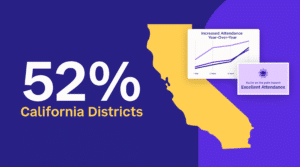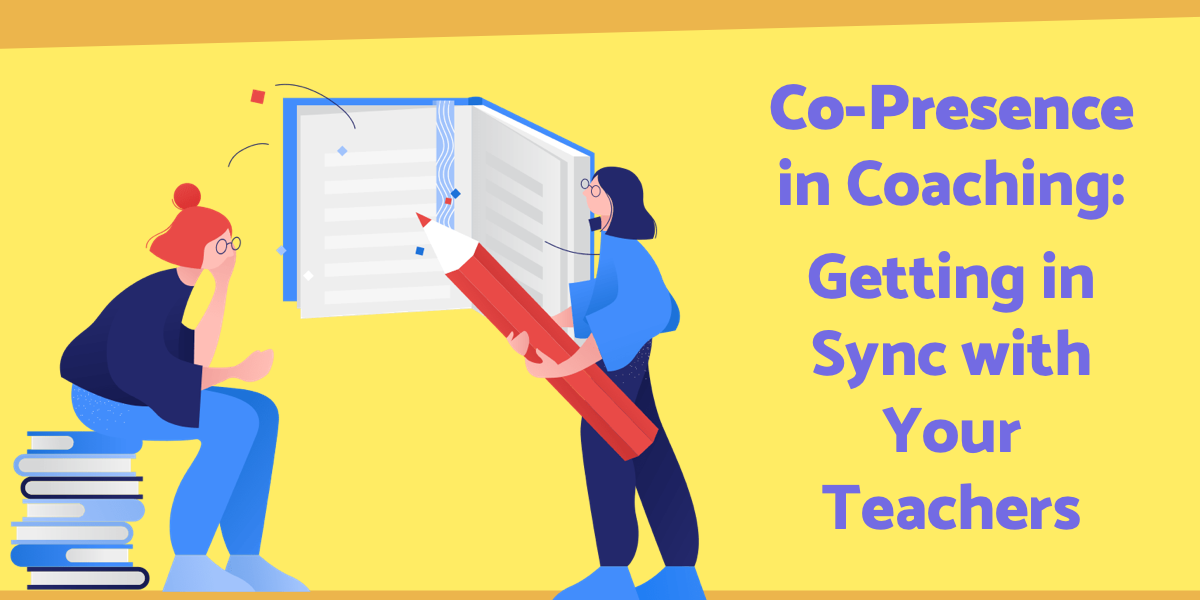
Featured Resource
Why Over Half of California School Districts Trust SchoolStatus
Read More >Join Mission: Attendance to reduce chronic absenteeism in 2025-26! >> Learn How <<






Have you ever been so in-sync with someone that you felt you were thinking and acting as one? Vicki Collet, associate professor at the University of Arkansas, highlights the magic that happens when a teacher and coach bond in their work together.
A
s part of our human experience, from time to time there are moments that we want more of. Moments, for example, when we are so in sync with another that we sense that our feelings and perceptions are the same as theirs. We’re connected. We’re flowing in the same river of experience.
Csikszentmihalyi describes flow as the state when a person is completely and not self-consciously absorbed in an activity, acting effortlessly. Sometimes, we experience these moments of heightened awareness of the here and now in concert with others. These are moments of co-presence. They happen in teaching and coaching, occasionally. We should make more of them.
During co-presence, our voluntary efforts align with those of others; we are reaching together toward the same end. We are alert and able, in touch with what is immediately before us and appropriately challenged. An instant–a particularly important moment–may feel frozen in time. Every perception is intensified. It’s etched and essential, for everyone involved. There’s unity.
Co-presence begins with being individually present–deeply listening, noticing, feeling, and being open to the moment. It means less multitasking, less distraction, and deliberately slowing a frenetic pace. Co-presence starts as an inside job, creating breathing space so that we can be aware, finding focus and emotional equilibrium.
Teachers and coaches cultivate moments of co-presence by directing their full attention to what is happening in the now, by observing with clarity and from a place of positive assumptions and empathy. Because our brains can’t fully attend to everything that is going on around us, we have to ensure that our inferential filters are right. We can choose to perceive with openness and generosity.
Planning and preparation pay off by freeing our brains to focus on what is currently happening rather than thinking about what we will say or do later. It’s about being in the current moment instead of the next. Our lesson plan or conferencing plan is a fulcrum we can pivot on, not a script. It’s a meandering path forward.
When we are present, we know, almost instinctively, what the next move will be. Action comes from a natural flow. By gathering information with all of our senses, we understand from within the context. Our next right move is responsive to others and to the situation. All of the dots are connected.
Be prepared. Pay attention. Immerse yourself in the circumstances. Call on all of your senses. Respond within the situation. Teachers and coaches cultivate co-presence by first being present. As presence increases, the etched-in-your-memory moments of co-presence will increase, too.
What does co-presence look and sound like in teaching and coaching, you ask? Because these moments are so memorable, it’s easy to provide a few examples.
A grammar lesson may seem an unlikely time for co-presence in teaching, but it happened when Samantha was teaching a lesson about compound sentences to her fourth-graders. She had prepared examples with her students in mind. “Chicken nuggets taste good, but chicken wings taste better,” she wrote on the anchor chart. “I don’t like chicken!” called out a voice from the class. “Don’t tell that to Carlos!” Samantha replied, and there were quiet chuckles around the room. Carlos’s love of chicken was well-known to the group! This shared experience was a moment of co-presence. The students, bonded as a group, focused their attention on learning about sentence structures.
Another example happened when I observed a third-grade class where the teacher, Jeff, had cheerful, relatable interactions with his students during their math lesson on “groups of”–a warm-up for multiplication. One of the most memorable moments in the lesson was when Jeff feigned surprise, took his glasses off, rubbed his eyes, got up close, and squinted at the Smartboard when a student said something that didn’t square with the diagram. The student laughed and quickly self-corrected. Jeff and the students were in sync.
Later, when Jeff and I talked about the lesson, we laughed together about that moment. I think Jeff felt co-present with me. We reminisced about other parts of the lesson: I cheered about something he felt went well, and we winced together at a possible misstep. As our meeting time was running out, he set a goal and we both wrote it down; then we calendared a time for our next check in.
During this coaching conversation, our efforts seemed aligned—we were mutually co-present. The coaching conversation with Jeff happened with us sitting in the same room at a conference table. Although masked and 6+ feel apart, we were mindfully aware of one another.
Being physically present, however, is neither necessary nor sufficient for co-presence. I can physically occupy the same space as others but be mentally absent from them. Conversely, I can be miles away, connecting virtually, and create co-presence. In a Zoom meeting recently, I felt co-presence when the volley of ideas was so back-and-forth that my colleague and I were finishing each other’s sentences. There was a lot of nodding and smiling and affirming going on.
Coaching co-presence can happen during planning and reflective conversations, and even during classroom observations. If we’re in a classroom and a six-year-old makes a comment that we find hilarious, since we can’t laugh out loud, we meet the teacher’s eyes, and in that quick eye-lock, we are laughing inside together. That is co-presence.
Co-presence in coaching comes when we pay attention to inner states—our own and those of the teachers we are working with. We invite co-presence when we look together at students’ work from a lesson. When we rejoice together over a student’s growth, we invite co-presence. When we stand shoulder-to-shoulder finishing a bulletin board before the superintendent’s visit, we invite co-presence. When we look, feel, and act together we experience co-presence.
During moments of co-presence, boundaries between collapse. We observe without being a mere observer. We feel connected to one another and to the situation. There’s communication and clarity. We act together rather than reacting to one another. We co-create, with ideas emerging through the interconnection.
Co-presence stems from full attention and rich flow of information. It’s a feeling that your attention, emotion, and behavior are in sync with someone else’s. Whether face-to-face or virtual, our work as coaches will benefit if we feel co-present with the teachers we are working with, and if they feel co-present with us.
Vicki S. Collet is an associate professor at the University of Arkansas. Prior to becoming a teacher educator, she worked as a district curriculum coordinator, instructional coach, interventionist, and elementary and secondary classroom teacher.
Be sure to connect with Vicki on Twitter @vscollet and on Facebook.
{{cta(‘352a410e-db79-4f33-a482-d301e8041965′,’justifycenter’)}}
Illustration by Maria Shukshina from Icons8.
 SchoolStatusSchoolStatus gives educators the clarity and tools they need to get students to class and keep them moving ahead. Through our integrated suite of data-driven products, we help districts spot attendance patterns early, reach families in ways that work for them, and support teacher growth with meaningful feedback. Our solutions include automated attendance interventions, multi-channel family communications in 130+ languages, educator development and coaching, streamlined digital workflows, and engaging school websites. Serving over 22 million students across thousands of districts in all 50 states, SchoolStatus helps teachers and staff see what matters, act with speed, and stay focused on students.
SchoolStatusSchoolStatus gives educators the clarity and tools they need to get students to class and keep them moving ahead. Through our integrated suite of data-driven products, we help districts spot attendance patterns early, reach families in ways that work for them, and support teacher growth with meaningful feedback. Our solutions include automated attendance interventions, multi-channel family communications in 130+ languages, educator development and coaching, streamlined digital workflows, and engaging school websites. Serving over 22 million students across thousands of districts in all 50 states, SchoolStatus helps teachers and staff see what matters, act with speed, and stay focused on students.
News, articles, and tips for meeting your district’s goals—delivered to your inbox.






